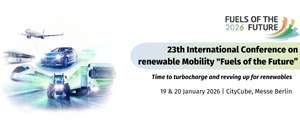NASCAR and American Ethanol celebrate 15 million miles on ethanol blended fuel
Since 2011, consumer adoption of higher blended ethanol fuels has grown steadily, with NASCAR competition one of the key leaders in the endeavour. The fuel, which is supplied by Sunoco, is a highly oxygenated unleaded race fuel that contains 15% ethanol.
“Sunoco is proud to celebrate 15 million miles on Sunoco Green E15 in NASCAR,” said Fred McConnell, director of marketing and motorsports at Sunoco. “To have raced 15 million miles with zero defects is a testament to the quality and performance of Sunoco Green E15 fuel and the incredible team who has refined and distributed it since 2011.”
“Reaching 15 million miles racing with Sunoco Green E15 across our three national series is a significant milestone,” added Elton Sawyer, vice-president, officiating and technical inspection at NASCAR. “Tremendous partnerships with Sunoco and American Ethanol have paved the way toward an industry-wide commitment to deliver high-performance racing while reducing emissions. Under the most rigorous demands, each weekend NASCAR validates the benefits and viability of a fuel blended with 15% ethanol.”
Aiming to reduce emissions, make the sport greener and display performance on and off the race track, NASCAR drivers thanked American Ethanol for the 15 million miles on the high-performance biofuel blend.
“American Ethanol’s partnership with NASCAR has been a fantastic platform to promote the benefits of cleaner-burning ethanol ever since the sport adopted Sunoco Green E15 – a high octane fuel blended with 15% ethanol in 2011,” noted Growth Energy CEO Emily Skor. “NASCAR fans have now seen the fuel perform flawlessly for 15 million miles under the most demanding circumstances imaginable. Meanwhile, consumers have put E15 to the test for more than 11 billion miles of commutes, road trips, and picking their kids up from school. Whether on or off the track, day after day, mile after mile, E15 continues to be the smart choice for drivers who care about their engines, reducing emissions, and saving money at the fuel pump.”










